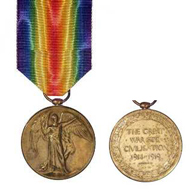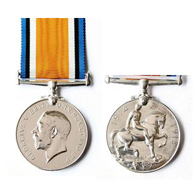BAKER Francis Shadrach
-

- 5049
- Private
- 15 Battalion
- Pomona
- Yes
- 4 November 1891
- 19 October 1915
- HMAT A16 Star of Victoria
- 31 March 1916
- Sydney
-
Family
Joseph Albert Baker married Eliza Werry in Brisbane on 12 April 1887. Joseph was a native of Birmingham, England and Eliza had been born in Queensland. Their children were Eliza Emily (Lindsay) (1888-1971), Joseph Percy (1889-1911), Francis Shadrach (1891-1984), Alma Alice (1894-1894), Florence Ida (Fritz) (1895-1950), Sidney Harcourt (1898-1941), Albert Edward (1900-1968), Arthur Herbert (1903-1979), Nellie Violet Lilly (Fursman) (1906-1972), and Charles Basil (1908-1976).
Francis' mother, Eliza, died at Pomona on 21 June 1912.
Military Context
The 15th Battalion was raised six weeks after the outbreak of the First World War. Three-quarters of the battalion were recruited as volunteers from Queensland, and the rest from Tasmania. With the 13th, 14th, and 16th Battalions it formed the 4th Brigade, commanded by Colonel John Monash.
The 4th Brigade landed at Anzac Cove late in the afternoon of 25 April 1915. After evacuation from Gallipoli and return to Egypt in December, the 15th Battalion was split and provided experienced soldiers for the 47th Battalion. The 4th Brigade was combined with the 12th and 13th Brigades to form the 4th Australian Division. In June 1916, they sailed for France and the Western Front. From then until 1918, the battalion took part in bloody trench warfare. Its first major action in France was at Pozieres in August. Along with most of the 4th Brigade, the battalion suffered heavy losses at Bullecourt in April 1917. It spent much of the remainder of 1917 in Belgium, advancing to the Hindenburg Line.
In March and April 1918, the battalion helped stop the German spring offensive. The battalion participated in the great allied offensive of 1918, fighting near Amiens on 8 August. This advance by British and empire troops was the greatest success in a single day on the Western Front and prompted General Erich Ludendorff to describe it as “the blackest day of the German army in this war”.
The battalion continued operations until late September 1918.
Enlistment
The "Chronicle" on 22 October 1915 at page 4 reported the latest enlistments from Pomona. Included was "F Baker driver of Skyring Creek, cream wagon driver".
Francis Shedrick Baker enlisted at Brisbane on 19 October 1915. His age was declared as 23 years 11 months (his birth date was 4 November 1891) and his occupation “cream carting”. He was 5 feet 5 inches in height, weighed 140 pounds, of dark complexion, with brown eyes and brown hair. His religion was Methodist. He recorded his father Joseph Albert Baker, Pomona, North Coast Line as his next of kin. The distinctive marks on his body were a scar on his left breast and on his right instep. His Service Number was 5049.
Military service
Private Baker was assigned to the 16th Reinforcements of the 15th Battalion. On 31 March 1916, he departed from Sydney aboard HMAT A16 “Star of Victoria” bound for Egypt. When the ship arrived on 5 May, unlike most on the ship's company who disembarked and reported to Tel-el-Kebir, he was in the ship’s hospital with influenza. He was transferred to 31st General Hospital, Port Said. After five days, he was again transferred, this time to the 3rd Auxiliary Hospital in Cairo. Then on 16 May, he was transferred to British Red Cross Hospital, Montazah.
On 2 June 1916, Private Baker was finally discharged to duty. He had been in Egypt for almost one month but influenza had kept him in hospital care. Five days later, he embarked on HMAT “Ionian” at Alexandria to join the British Expeditionary Force in France. He disembarked at Marseilles on 14 June. He travelled north by troop train to the Divisional headquarters at Etaples where he marched in on 17 June. He was eventually taken on strength of 15th Battalion in the field on 20 July 1916.
Private Baker fought with the battalion at Pozieres, Mouquet Farm, St. Eloi, Boorlartbeek and Bullecourt.
On 15 May 1917, Private Baker was awarded the Military Medal. His father was to receive the formal advice from Base Records on 30 October in the following terms: “I have much pleasure in forwarding hereunder copy of extract from Fourth Supplement No. 30135 to the London Gazette dated 15th June 1917, relating to the conspicuous services rendered by your son, No. 5049, Private F.S. Baker, 15th Battalion.
AWARDED THE MILITARY MEDAL – HIS MAJESTY THE KING has been graciously pleased to award the Military Medal for bravery in the Field to the undermentioned soldier – PRIVATE FRANCIS SHEDRICK BAKER.
The above has been promulgated in the Commonwealth of Australia Gazette No.169 of 4th October 1917.”
The 15th Battalion fought on - Messines, Polygon Wood, the Third battle of Ypres and Amiens.
In September 1918, with momentum fully with Imperial Forces, the 15th Battalion was skirmishing to capture outposts of the Hindenburg Line. It had reached Jeancourt on 17 September and embarked upon what would be its last battle of the war. Private Baker was wounded in action. He suffered “gunshot wounds” (more likely the cause of wounding was bomb shrapnel) to his back/shoulder and left arm. He was treated by 4th Field Ambulance and taken to 33rd Casualty Clearing Station at Ligny St Flochel. Ambulance Train 19 then transported him to the 10th General Hospital at Rouen. On 19 September, he was evacuated to the United Kingdom on Hospital Ship “St. Patrick”. Next day, he was admitted to 1st Southern General Hospital, Dudley Road, Birmingham.
On 10 December 1918, he was transferred to 3rd Auxiliary Hospital, Dartford. Next day, he was granted furlough to London, with orders to report back to No.1 Command Depot at Sutton Veny on 28 December.
Return to Australia
On 7 February 1919, Private Baker embarked at London (List 217) for his return to Australia on HMAT A73 “Lancashire”. He disembarked at Melbourne on 24 March and transferred by ship to Brisbane. He was discharged from the A.I.F. there on 19 May 1919.
After the War
Francis Baker M.M. was issued the British War medal and the Victory medal.
In the Queensland Electoral Rolls of 1919 and 1925, Francis Baker was recorded at Pomona where his occupation was “labourer”.
Francis Baker married Agnes Ethel Brown in Queensland on 1 April 1925. The couple were to have seven children: Betty Caroline, Elwyn Keith, Francis Joseph (“Joe”), Joy Oriel, Linton Noel, Margaret Iris, and Yvonne Myra.
In the Rolls from 1936 to 1943, Francis and Agnes were recorded at Kareewa, Pomona, where Francis’ occupation was “dairyman”. From 1949 to 1980, the couple were at Railway Parade, Pomona, and Francis a “forestry employee”.
Francis’ father, Joseph Albert Baker, aged 99 years, died at Pomona on 8 November 1962.
Francis Baker, ex-A.I.F., aged 92 years, died in October 1984.
-
- Bullecourt
- Hamel
- Hindenburg Line
- Messines
- Polygon Wood
- Pozieres
- Villers-Bretonneux
- Mouquet Farm
-

-

-

- Returned to Australia
- 24 March 1919
- October 1984
- Queensland
- 92 years
-
Pomona State School Roll of Honor, Pomona State School, Station Street, Pomona
Shire of Noosa Roll of Honor, Shire Council Chambers, Pelican Street, Tewantin
Federal Honour Roll, whereabouts unknown
Skyring Creek District Roll of Honour (Kybong - Pomona), whereabouts unknown
-
Australian War Memorial
National Australia Archives
Ancestry.com
History of the 15th Battalion AIF 1914-1918 by Lieutenant T.P. Chataway
Trove digitised newspapers - Grant Thorne
